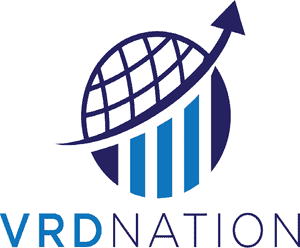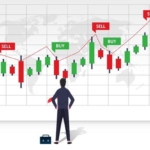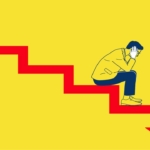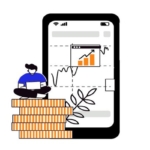What is Put Call Ratio
Introduction
In this video, we will talk about everything you need to know to know about the Put call ratio. What is PCR, how is it calculated, how to interpret it and how to use it in your day-to-day trading?
Let’s start with
What is PCR?
Put call ratio is a very important metric that traders use to understand the market sentiment and more importantly to assess whether the market has become overbought or oversold.
The calculation behind PCR is rather simple – it is basically a ratio of total open interest in put options and total open interest in calls.
Let’s take the example to understand it better.
We are going to calculate the put-call ratio of Nifty.
So, for that, first, we need to go to the option chain of Nifty and you can see what kind of action is happening in the call options and put options and at what strike prices.
Ok, now that we know how the PCR is calculated and on which websites we can find them easily.
And let’ say we got the PCR of .8 or 1.2 but what does it mean? Is the market bullish/bearish, overbought, oversold, right? So how should we interpret this value?
How to Interpret it?
The first rule for understanding PCR or any other options-based data is that we have to see them from options sellers’ perspectives, not option buyers’ perspectives.
Why? Because option sellers are more resourceful, have insider information, and have much better infrastructure than option buyers so their chances of being right are much higher.
If you want to understand why, we have made a separate video on Max pain theory, do check it out.
So, if the PCR is greater than 1 it means that option sellers are selling more puts than calls.
When do you sell puts, when you expect the market to remain bullish or at least above a certain level….so a PCR of greater than 1 indicates bullishness.
Similarly, if PCR is smaller than 1, it means that option sellers are selling more call options than put options. When do you sell call options? W
Right,, that’s the way to read market sentiment by looking at the PCR.
But sometimes, the market can become too bullish or too bearish in the short run and that can imply that the market may reverse direction for a little while in order to cool down a little.
So, historically a PCR of 1.6 or higher indicates that the market is overbought and the market may come down a bit so traders look for shorting opportunities in such scenarios.
On the other side, a PCR of .6 or lower indicates that the market is too oversold in the short run and that a bounce back might be in order so traders look for opportunities on the long side.
So, that is the big picture about PCR guys but here are a few important points to note:
Key Points
- PCR can be calculated based on OI or by volume. Personally, I prefer OI based but
- PCR calculation can be different among websites because they may combine certain expiries and show a consolidated PC ratio.
- Some people don’t include far OTM options for the calculation of PCR. That’s fine although the difference is not that significant
- PCR should not be the only criteria for taking a trade; especially when the PCR goes to extreme levels.
Conclusion
So, that’s it guys, I hope you understand what is PCR and how it use in trading.
Howdy!
If you’re here for the first time, let’s get introduced.
VRD Nation is India’s premier stock market training institute and we (Team VRD Nation) are passionate about teaching each and every aspect of investing and trading.
If you’re here for the first time, don’t forget to check out “Free Training” section where we have tons of free videos and articles to kick start your stock market journey.
Also, we got two awesome YouTube channels where you can continue the learning process.
Must-Read Articles
What is Put Call Ratio
Introduction
In this video, we will talk about everything you need to know to know about the Put call ratio. What is PCR, how is it calculated, how to interpret it and how to use it in your day-to-day trading?
Let’s start with
What is PCR?
Put call ratio is a very important metric that traders use to understand the market sentiment and more importantly to assess whether the market has become overbought or oversold.
The calculation behind PCR is rather simple – it is basically a ratio of total open interest in put options and total open interest in calls.
Let’s take the example to understand it better.
We are going to calculate the put-call ratio of Nifty.
So, for that, first, we need to go to the option chain of Nifty and you can see what kind of action is happening in the call options and put options and at what strike prices.
Ok, now that we know how the PCR is calculated and on which websites we can find them easily.
And let’ say we got the PCR of .8 or 1.2 but what does it mean? Is the market bullish/bearish, overbought, oversold, right? So how should we interpret this value?
How to Interpret it?
The first rule for understanding PCR or any other options-based data is that we have to see them from options sellers’ perspectives, not option buyers’ perspectives.
Why? Because option sellers are more resourceful, have insider information, and have much better infrastructure than option buyers so their chances of being right are much higher.
If you want to understand why, we have made a separate video on Max pain theory, do check it out.
So, if the PCR is greater than 1 it means that option sellers are selling more puts than calls.
When do you sell puts, when you expect the market to remain bullish or at least above a certain level….so a PCR of greater than 1 indicates bullishness.
Similarly, if PCR is smaller than 1, it means that option sellers are selling more call options than put options. When do you sell call options? W
Right,, that’s the way to read market sentiment by looking at the PCR.
But sometimes, the market can become too bullish or too bearish in the short run and that can imply that the market may reverse direction for a little while in order to cool down a little.
So, historically a PCR of 1.6 or higher indicates that the market is overbought and the market may come down a bit so traders look for shorting opportunities in such scenarios.
On the other side, a PCR of .6 or lower indicates that the market is too oversold in the short run and that a bounce back might be in order so traders look for opportunities on the long side.
So, that is the big picture about PCR guys but here are a few important points to note:
Key Points
- PCR can be calculated based on OI or by volume. Personally, I prefer OI based but
- PCR calculation can be different among websites because they may combine certain expiries and show a consolidated PC ratio.
- Some people don’t include far OTM options for the calculation of PCR. That’s fine although the difference is not that significant
- PCR should not be the only criteria for taking a trade; especially when the PCR goes to extreme levels.
Conclusion
So, that’s it guys, I hope you understand what is PCR and how it use in trading.














Leave A Comment